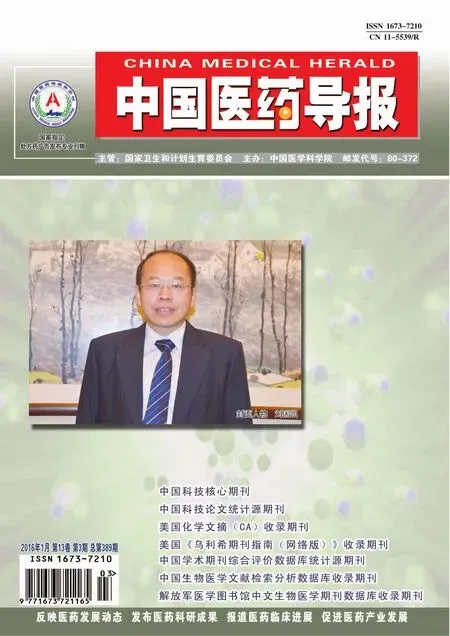不同种植方案下软、硬组织稳定性的远期比较
杨 峻 林 勇.浙江省宁波市李惠利医院口腔科,浙江宁波 3504;2.河南省濮阳市油田总医院口腔科,河南濮阳 45700
不同种植方案下软、硬组织稳定性的远期比较
杨峻1林勇2▲
1.浙江省宁波市李惠利医院口腔科,浙江宁波315041;2.河南省濮阳市油田总医院口腔科,河南濮阳457001
目的 探讨前牙区不同种植方案修复后软、硬组织稳定性的差异。方法 选取2012年1月~2013年1月于宁波市李惠利医院就诊并行牙齿种植的患者80例,种植体92颗,分为即刻种植组(30例,种植体36颗)和常规种植组(50例,种植体56颗)。修复后随访24个月,检查并比较两组种植体稳定性、种植体周围软组织情况和骨水平等。结果 术后4个月和永久修复体戴入前,两组种植体稳定性系数值比较,差异均无统计学意义 (P>0.05)。修复2年后,两组近中龈乳头平均增高、远中龈乳头平均增高、唇侧龈缘水平平均丧失情况比较,差异均无统计学意义(P>0.05)。修复2年后,两组近中侧和远中侧骨吸收比较,差异均无统计学意义(P>0.05)。结论前牙区即刻种植与常规种植均可获得良好的软、硬组织稳定性,但即刻修复具有疗程上的优势,对于适应人群应优先考虑。
即刻种植;常规种植;稳定性
常规的牙种植患者从牙缺失到戴牙需经历共1年的时间,患者的无牙期较长[1-2]。随着医疗技术的不断发展,患者对牙齿种植的治疗时间和种植区美学疗效有了更高的要求,促使医生更多地选择即刻种植。即刻种植是在拔牙后即刻植入人工种植体,具有手术次数少、创伤小、痛苦小等优点[3-4]。但也存在不足之处,如较高的适应证,另外,其是否增加拔除患牙后的炎症发生率等尚存在争议[5]。本研究对2012年1月~2013年1月于宁波市李惠利医院(以下简称“我院”)就诊,并行牙齿种植的患者80例为研究对象,探讨前牙区即刻种植和常规种植在修复2年后其软、硬组织稳定性的差异,旨在为前牙区种植方案的选择提供依据。
1 资料与方法
1.1一般资料
选取于我院就诊并行牙齿种植的患者80例,种植体92颗。纳入标准:邻牙及对侧同名牙无严重的牙体或牙周疾患;牙龈外形丰满与周围连续和谐;知情同意。排除标准:根尖感染的患牙;邻牙有明显的牙周疾患;存在种植手术的绝对禁忌证;牙龈指数>3。对于拔除患牙后满足即刻植适应证的患者进行即刻种植,作为即刻种植组(30例,种植体36颗);对于不能满足即刻种植适应证的患者,在处理后的牙槽窝内植入骨胶原,行拔牙窝位点保存,待拔牙窝愈合3~6个月后再行种植体植入,作为常规种植组(50例,种植体56颗)。即刻种植组中男18例,女12例;年龄34~68岁,平均(43.4±8.6)岁。常规种植组中男32例,女18例;年龄36~72岁,平均(44.5±7.8)岁。两组一般情况比较,差异无统计学意义(P>0.05),具有可比性。
1.2方法
1.2.1术前准备所有患者术前进行口腔卫生指导,行常规牙周治疗,拍摄根尖片、全口曲面体层片或锥束计算机断层扫描。
1.2.2种植体植入手术过程由同一医生完成。微创拔牙并清除炎症肉芽组织,生理盐水冲洗创口。常规种植组:采用翻瓣技术植入种植体(XIVE种植体,Friadent,Mmannhein,Germany)。种植体肩台位于骨平面下<1.0mm的位置,穿出点位于未来修复体的舌隆突处。采用Bio-Oss人工骨粉(瑞士盖氏公司)充填少量骨缺损位置,并用Bio-gide生物膜(瑞士盖氏公司)覆盖缺损表面。即刻种植组:为保护牙龈乳头,对于确认骨量足够的患者,采用不翻瓣技术;对于骨量不足的患者做向近远中延伸的沟内切口,将唇侧黏膜瓣翻开2~3 mm探查唇侧骨板的完整性;对于有缺陷的病例,向远中做松弛切口。种植体与对照组相同。
1.2.3种植体稳定性测量术后4个月,使用Osstell共振频率分析仪测量种植体稳定性系数值(implant stability quality,ISQ),ISQ>60的种植体开始戴用种植体支持的临时冠。
1.2.4永久修复采用个性化印模法制取印模进行永久修复。医生根据牙龈袖口外形进行永久修复,采用纵向螺丝固位或黏接固位的贵金属烤瓷冠或全瓷冠修复。
1.3观察指标
于术后4个月和永久修复体戴入前进行种植体稳定性测量。在种植上部修复体戴入即刻及戴用2年后,测量牙龈乳头高度和唇侧龈缘水平高度,选取近中牙龈乳头、远中牙龈乳头、唇侧龈缘水平高度对牙龈形态的稳定性进行评价。在种植上部修复体戴入即刻及戴用2年后,采用平行投射技术拍摄口内的X线片,测量种植体边缘骨水平,参照吴敏节等[6]方法。
1.4统计学方法
采用SPSS 18.0统计学软件进行数据分析,计量资料数据用均数±标准差(±s)表示,两组组间比较采用t检验;以P<0.05为差异有统计学意义。
2 结果
2.1修复体完好性
随访2年,所有修复体均完好。
2.2种植体稳定性
术后4个月和永久修复体戴入前,两组ISQ比较,差异均无统计学意义(P>0.05),见表1。
表1 两组在术后4个月和永久修复体戴入前ISQ比较(±s)

表1 两组在术后4个月和永久修复体戴入前ISQ比较(±s)
注:ISO:种植体稳定性系数
组别 种植体数 术后4个月 永久修复体戴入前即刻种植组常规种植组36 56 t值 P值72.36±4.22 71.59±3.89 0.985 >0.05 72.56±4.35 71.98±3.89 1.205 >0.05
2.3牙龈形态变化情况
修复2年后,两组近中龈乳头平均增高、远中龈乳头平均增高、唇侧龈缘水平平均丧失比较,差异均无统计学意义(P>0.05),见表2。
表2 两组修复2年后牙龈形态变化情况比较(mm,±s)

表2 两组修复2年后牙龈形态变化情况比较(mm,±s)
组别 种植体数 近中龈乳头平均增高远中龈乳头平均增高唇侧龈缘水平平均丧失即刻种植组常规种植组36 56 t值 P值0.16±0.31 0.12±0.28 0.886 >0.05 0.07±0.43 0.05±0.39 0.739 >0.05 0.14±0.29 0.15±0.33 0.912 >0.05
2.4边缘骨水平变化情况
修复2年后,两组近中侧和远中侧骨吸收比较,差异均无统计学意义(P>0.05),见表3。
表3 两组修复2年后边缘骨水平变化情况比较(mm,±s)

表3 两组修复2年后边缘骨水平变化情况比较(mm,±s)
组别 种植体数 近中侧 远中侧即刻种植组常规种植组36 56 t值 P值0.70±0.36 0.68±0.32 0.905 >0.05 0.75±0.33 0.76±0.40 0.512 >0.05
3 讨论
临床常用的种植系统通常由种植体、基台、上部结构3部分组成。种植体是植入骨内的部分,采用生物相容性优异的材料如钛、生物陶瓷等制作。基台是种植体穿过软组织的部分,通常用螺丝将它固定在种植体上。上部结构指修复体通常所具有的冠、桥、支架、附着体等结构。与常规义齿相比,种植义齿可通过标准预制的构件更方便、更精确地通过基台将修复体与种植体相连接。种植义齿已成为一项成熟的口腔修复治疗手段。
延期种植是指患者在拔牙后经过一段时间(3~4个月),待拔牙创伤已完全愈合,牙槽骨恢复一定的高度和宽度以后,再施行正常的种植体植入手术,此方法耗时长。即刻种植是拔牙后同期植入种植体,可有效避免愈合过程中牙槽骨的吸收过程,缩短了疗程,降低了患者的痛苦[7-8]。既往大量动物实验和临床研究表明,只要适应证合适,即刻种植可以取得与常规种植方法相当的骨结合[9-11]。即刻种植的咀嚼功能大大优于其他假牙,修复时间短,具有很强的固位和稳定性,如真牙一样在患者的口腔里,可少磨或不磨真牙,对牙齿损伤小,不需要活动牙必备的基托和卡环,没有大面积的基托导致的味觉迟钝与不舒适感,体积小不外露金属,美观,更有利于保持口腔清洁卫生。
为了探讨前牙区即刻种植和常规种植远期对软、硬组织稳定性的影响,本文进行了为期2年的随访。结果显示,80例患者均完成了最终修复,修复2年后复查时均未见明显异常,种植体存留率为100%,表明即刻种植和常规种植远期疗效相近。对两组术后4个月和永久修复体戴入前的种植体稳定性采用Osstell共振频率分析仪进行分析,显示两组ISQ差异无统计学意义(P>0.05),表明即刻种植和常规种植种植体均完成了骨结合,获得了良好的稳定性,在永久修复时均获得了良好的骨结合。既往多采用临床医师主观判断种植体的稳定性,存在较大的误差。Osstell共振频率分析仪提供了一种无创的种植体稳定性评价的客观方法,得到了广泛认可,且公认为ISQ值≥60是种植体获得初期稳定性的最小值[12-13]。良好的初期稳定性被视为未来骨结合形成的基础[14],如果种植体稳定性差将导致软组织长入其中。
修复2年后,两组近中龈乳头平均增高、远中龈乳头平均增高、唇侧龈缘水平平均丧失变化都不足1mm,组间比较差异均无统计学意义(P>0.05),表明即刻种植和常规种植种植体周围的软组织均相当稳定,美学修复效果良好。龈乳头的形态维护被认为是即刻种植手术维护最重要的方面[15-16]。骨的吸收情况是反映种植是否成功的重要标准之一[17-18]。本研究结果数据显示,修复2年后,两组近中侧和远中侧骨吸收比较差异均无统计学意义(P>0.05),表明即刻种植和延期种植修复后远期骨水平均很稳定。大量文献报道称,短期内即刻种植和延期种植其牙周袋探诊深度和影像学表现无明显差异[19-25],与本文结果一致。
综上所述,前牙区即刻种植与常规种植均可获得良好的软、硬组织稳定性,但即刻修复在疗程上具有优势,对于适应人群应优先考虑。但由于本研究只进行了2年的随访,观察时间有限,尚有待远期的随访观察。
[1]田涛,施斌,陆艳华.上颌前牙即刻种植与即刻修复的临床体会[J].临床口腔医学杂志,2014,30(9):545-547
[2]Rowan M,Lee D,Pi-Anfruns J,et al.Mechanical versus biological stability of immediate and delayed implant placement using resonance frequency analysis[J].Journal of Oral and Maxillofacial Surgery,2015,73(2):253-257.
[3]钱楚凡.前牙即刻种植与延迟种植的临床疗效比较[J].中国现代医药杂志,2013,15(8):44-46
[4]胡卫子.上领前牙区即刻种植修复临床牙龋美学观察[D].合肥:安徽医科大学,2011.
[5]Lee CT,Chiu TS,Chuang SK,et al.Alterations of the bone dimension following immediate implant placement into extraction socket:systematic review and meta-analysis[J]. Journal of Clinical Periodontology,2014,41(9):914-926.
[6]吴敏节,张相皞,邹立东,等.前牙即刻种植和常规种植修复2年后软、硬组织稳定性比较[J].北京大学学报:医学版,2015,47(1):67-71
[7]Clementini M,Tiravia L,De Risi V,et al.Dimensional changes after immediate implant placement with or without simultaneous regenerative procedures:a systematic review and meta-analysis[J].Journal of Clinical Periodontology,2015,42(7):666-677.
[8]Lee CT,Chuang SK,Stoupel J.Survival analysis and other clinical outcomes of immediate implant placement in sites with periapical lesions:systematic review[J].The International Journal of Oral&Maxillofacial Implants,2014,30(2):268-278.
[9]Holbrook SE.Model guided immediate implant placement and provisionalization in the esthetic zone utilizing a nanostructured titanium implant[J].Journal of Oral Implantology,2014,30(1):41-51.
[10]Al-Hezaimi K,Al-Shabeeb MS,Al-Askar M,et al.Microcomputed tomographic analysis of the alveolar ridge alteration around extraction sites with and without immediate implants placement:in vivo study[J].Clinical Implant Dentistry and Related Research,2014,16(2):223-229.
[11]Da Rosa JCM,De Oliveira Rosa ACP,Fadanelli MA,et al.Immediate implant placement,reconstruction of com-promised sockets,and repair of gingival recession with a triple graft from the maxillary tuberosity:a variation of the immediate dentoalveolar restoration technique[J]. The Journal of Prosthetic Dentistry,2014,112(4):717-722.
[12]Hardigan PC.Gingival Margin Changes in maxillary anterior sites after single immediate implant placement and provisionalization:a 5-year retrospective study of 47 patients[J].The International Journal of Oral&Maxillofacial Implants,2014,(1):127-134.
[13]Pellicer-Chover H,Penarrocha-Oltra D,Bagán L,et al. Single-blind randomized clinical trial to evaluate clinical and radiological outcomes after one year of immediate versus delayed implant placement supporting full-arch prostheses[J].Medicina Oral,2014,19(3):e295.
[14]Goh BT,Chanchareonsook N,Tideman H,et al.The use of a polycaprolactone-tricalcium phosphate scaffold for bone regeneration of tooth socket facial wall defects and simultaneous immediate dental implant placement in Macaca fascicularis[J].Journal of Biomedical Materials Research,2014,102(5):1379-1388.
[15]Blus C,Szmukler-Moncler S,Khoury P,et al.Immediate implants placed in infected and non-infected sites after atraumatic tooth extraction and placement with ultrasonic bone surgery[J].Clinical Implant Dentistry and Related Research,2015,17(S1):e287-e297.
[16]Marchack CB,Moy PK.Computed tomography-based,template-guided implant placement and immediate loading:an 8-year clinical report[J].The Journal of Prosthetic Dentistry,2014,112(6):1319-1323.
[17]Casella D,Bernini M,Bencini L,et al.TiLoop誖Bramesh used for immediate breast reconstruction:comparison of retropectoral and subcutaneous implant placement in a prospective single-institution series[J].European Journal of Plastic Surgery,2014,37(11):599-604.
[18]马毅慧,石咏梅,郭家平,等.即刻种植与延期种植的回顾性临床研究[J].临床口腔医学杂志,2012,28(10):628-629.
[19]Spin-Neto R,Pontes AEF,Wenzel A,et al.Patient discomfort following single-tooth implant placement:a randomized controlled trial of immediate vs.conventional tooth restoration[J].Oral Health and Dental Management,2014,13(2):441-445.
[20]Schropp L,Wenzel A,Stavropoulos A.Early,delayed,or late single implant placement:10-year results from a randomized controlled clinical trial[J].Clinical Oral Implants Research,2014,25(12):1359-1365.
[21]Lin MH,Mau LP,Cochran DL,et al.Risk assessment of inferior alveolar nerve injury for immediate implant placement in the posterior mandible:a virtual implant placement study[J].Journal of Dentistry,2014,42(3):263-270.
[22]Lee YM,Kim DY,Kim JY,et al.Peri-implant soft tissue level secondary to a connective tissue graft in conjunction with immediate implant placement:a 2-year follow-up report of 11 consecutive cases[J].The International Journal of Periodontics&Restorative Dentistry,2012,32 (2):213-222.
[23]Vignoletti F,DiscepoliN,Müller A,et al.Bone modelling at fresh extraction sockets:immediate implant placement versus spontaneous healing.An experimental study in the beagle dog[J].Journal of Clinical Periodontology,2012,39(1):91-97.
[24]Roe P,Kan JY,Rungcharassaeng K,et al.Horizontal and vertical dimensional changes of peri-implant facial bone following immediate placement and provisionalization of maxillary anterior single implants:a 1-year cone beam computed tomography study[J].The International Journal of Oral&Maxillofacial Implants,2011,27(2):393-400.
[25]Bruno V,Badino M,Sacco R,et al.The use of a prosthetic template to maintain the papilla in the esthetic zone for immediate implant placement by means of a radiographic procedure[J].The Journal of Prosthetic Dentistry,2012,108(6):394-397.
Long-term comparison of stability of soft-tissue and hard tissue under different implant schemes
YANG Jun1LIN Yong2▲
1.Department of Stomatology,Ningbo Lihuili Hospital,Zhejiang Province,Ningbo315041,China;2.Department of Stomatology,Puyang Oilfield General Hospital,He'nan Province,Puyang457001,China
Objective To investigate the stability of soft-tissue and hard-tissue after different implant schemes in front teeth area.Methods 80 cases of patients(implant of 92 teeth)underwent dental implant in Ningbo Lihuili Hospital from January 2012 to January 2013 were selected and divided into immediate implant group(30 cases,36 teeth)and conventional implant group(50 cases,56 teeth),follow-up for 24 months.The implant stability,peri-implant soft tissue,bone level were detected and compared between the two groups.Results After 4months surgery and before permanent prosthesis implant,there was no significant difference in implant stability coefficient between the two groups(P>0.05).After repair of 2 years,there were no significant differences in the average increase of proximal mesial gingiva papilla,the average increase of distal mesial gingiva papilla,the average loss of lip side gingival margin level between the two groups(P>0.05).After repair of 2 years,there were no significant differences in bone resorption of proximal gingiva mesial and distal gingiva mesial between the two groups(P>0.05).Conclusion Immediate implant and conventional implant in front teeth area can both get good stability of soft-tissue and hard tissue,but immediate implant has course advantage,should give priority to intended population.
Immediate implant;Conventional implant;Stability
R782.1
A
1673-7210(2016)01(c)-0126-04
2015-09-28本文编辑:程铭)

